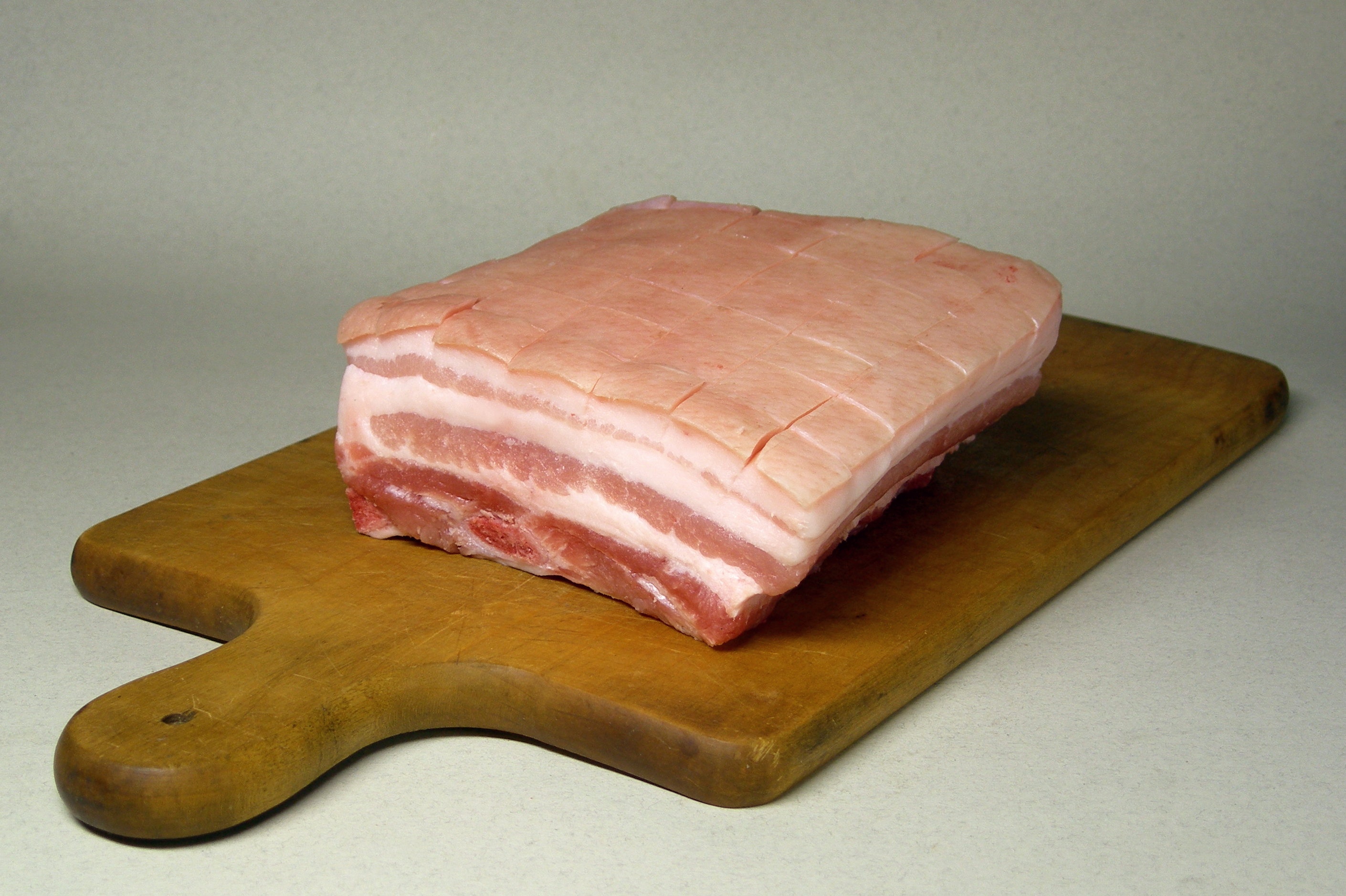
Pork
Pork is the culinary name for the meat of the pig (Sus domesticus). It is the most commonly consumed meat worldwide,[1] with evidence of pig husbandry dating back to 5000 BCE.[2]
For other uses, see Pork (disambiguation).
Pork is eaten both freshly cooked and preserved; curing extends the shelf life of pork products. Ham, gammon, bacon, and pork sausage are examples of preserved pork. Charcuterie is the branch of cooking devoted to prepared meat products, many from pork.
Pork is the most popular meat in the Western world, particularly in Central Europe. It is also very popular in East and Southeast Asia (Mainland Southeast Asia, Philippines, Singapore, and East Timor). The meat is highly prized in Asian cuisines, especially in China (including Hong Kong) and Northeast India,[3][4] for its fat content and texture.
Some religions and cultures prohibit pork consumption, notably Islam and Judaism.
Industrial raw material
Due to the fact that pigs can eat unused food originally meant for humans, and due to the high availability of such food in many industrialized countries, pork and other products from pigs have become securely sourced and low-priced commodities. This makes pig products very popular as raw material in many industrially produced products.
Nutritional value per 100 g (3.5 oz)
1,013 kJ (242 kcal)
0.00 g
0.0 g
5.230 g
6.190 g
1.200 g
0.338 g
1.234 g
1.260 g
2.177 g
2.446 g
0.712 g
0.344 g
1.086 g
0.936 g
1.473 g
1.723 g
1.067 g
1.603 g
2.512 g
4.215 g
1.409 g
1.158 g
1.128 g
Quantity
Quantity
Quantity
57.87 g
Nutrition
Its myoglobin content is lower than that of beef, but much higher than that of chicken, so the USDA treats pork as a red meat.[26] In 1987, the U.S. National Pork Board began an advertising campaign to position pork as "the other white meat"—due to a public perception of chicken and turkey (white meat) as healthier than red meat. The campaign was highly successful and resulted in 87% of consumers identifying pork with the slogan. The board retired the slogan on 4 March 2011.[27]
Pork is very high in thiamin (vitamin B1).[28][29][30][31] Pork with its fat trimmed is leaner than the meat of most domesticated animals, but is high in cholesterol and saturated fat.

























